How to Attract Birds to a Bird Bath
Updated: Apr. 08, 2022
Some flyers skip feeders but you can still attract these birds to a bird bath. Lure more birds to your backyard with these proven bird bath tips.
Our editors and experts handpick every product we feature. We may earn a commission from your purchases.
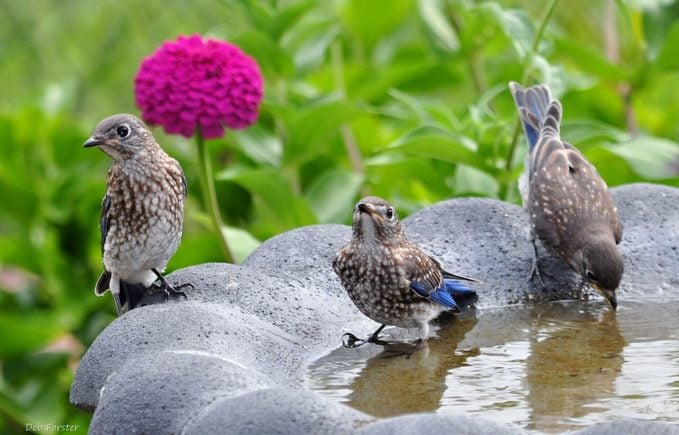
Water features—such as bird baths, garden ponds and water fountains—are centerpieces of bird activity in yards, acting as safe places to get clean and sip fresh water. Add one to your space to attract these birds that usually turn up their beaks at birdseed offerings, but can’t resist taking a dip in a birdie pool. Here’s how to attract birds to a bird bath.
Birds That Use Bird Baths
Tanagers
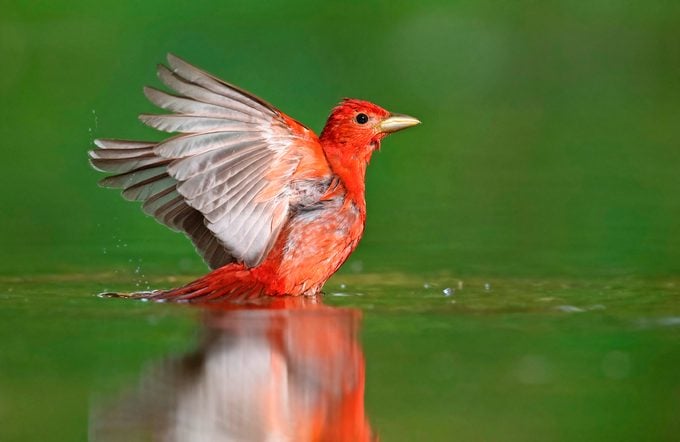
Western, scarlet and summer tanagers are some of the most tropical-looking species that appear in the United States and Canada, but they tend to stay up in the treetops. Providing water can lure them down and expand the variety of birds you see in your yard, according to Laura and Mel Tracy, owners of a Wild Birds Unlimited store in Palos Park, Illinois. They’ve had summer tanagers—and several species of warblers—come to their bird bath.
Thrushes
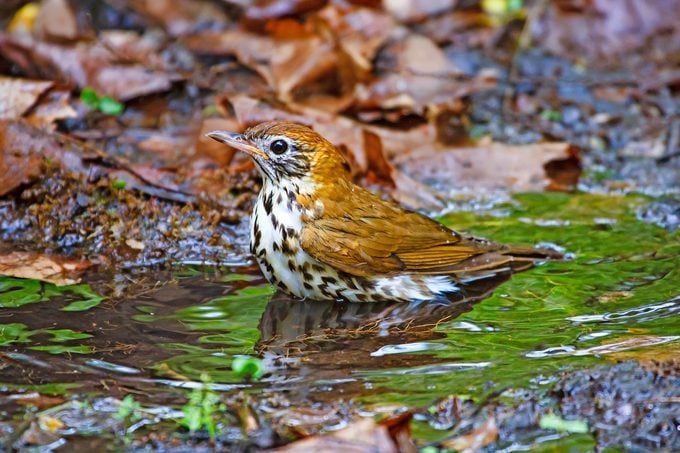
American robins are the most familiar of these hefty, long-legged songbirds. Varied thrushes are common in the dense wet woods of the Pacific Northwest. Veery and wood thrushes boast rich cinnamon hues, while hermit and Swainson’s thrushes are more olive in tone. Depending on the area, several thrushes can show up in any yard during migration. As insect and berry specialists, thrushes aren’t particularly drawn to feeders, but they will slurp up water from a bird bath.
Bluebirds
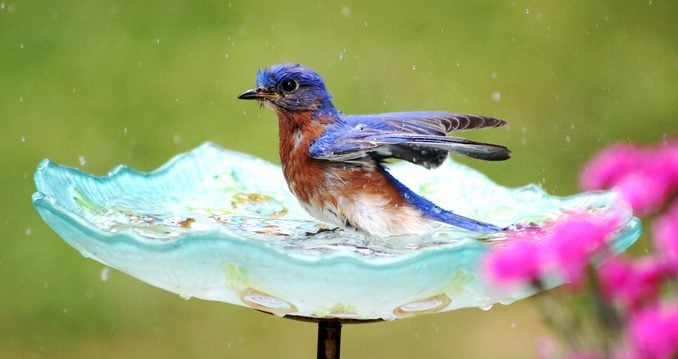
While bluebirds are also members of the thrush family, they’re special enough to merit their own category. They may take mealworms from a feeder, but a bird bath is far more attractive to western, eastern and mountain bluebirds—especially during cold snaps. Bluebirds, robins and many other birds aren’t able to eat snow as cold-weather species (such as juncos) can, the Tracys point out. Set up a heated bird bath to keep water available year-round, even on days with freezing temperatures, to help these birds stay hydrated.
Kinglets
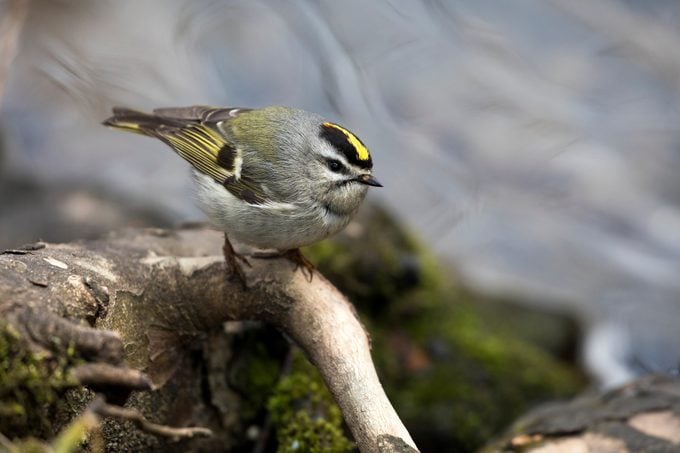
Tiny, active ruby-crowned and golden-crowned kinglets get their abundance of energy from scarfing insects high in the trees. Moving water may bring them down from the canopy, but they won’t sit still long. After a brief refresh session at the water, kinglets will vanish just as quickly as they appeared.
Vireos
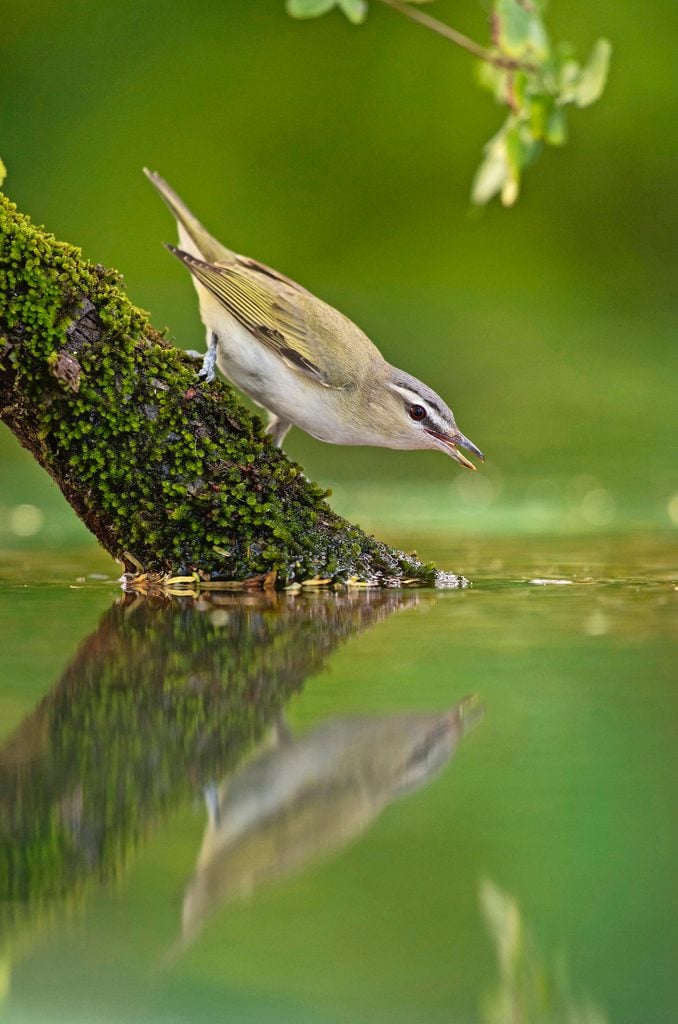
The birds in this musical group are noted for their near-constant singing from the treetops. A thicker bill helps distinguish vireos from other insect eaters. A simple water dish might not be enough to attract vireos, so consider a flowing fountain instead. Moving water cuts down on mosquito egg-laying and may even attract hummingbirds.
Thrashers
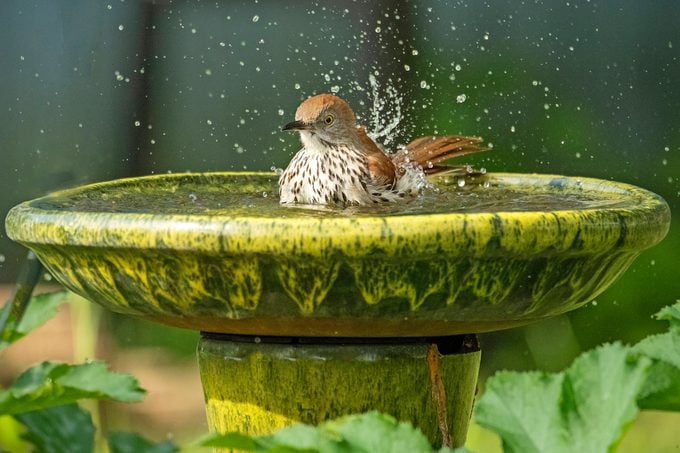
Providing shelter is another key element for successfully attracting water lovers, especially for thicket-dwelling fliers such as thrashers. Entice them by situating a bird bath near cover. Easy access to trees and shrubs protects all songbirds from predators. Wet birds cannot fly well, so they need a place to preen themselves and stay safe, the Tracys explain.
Waxwings
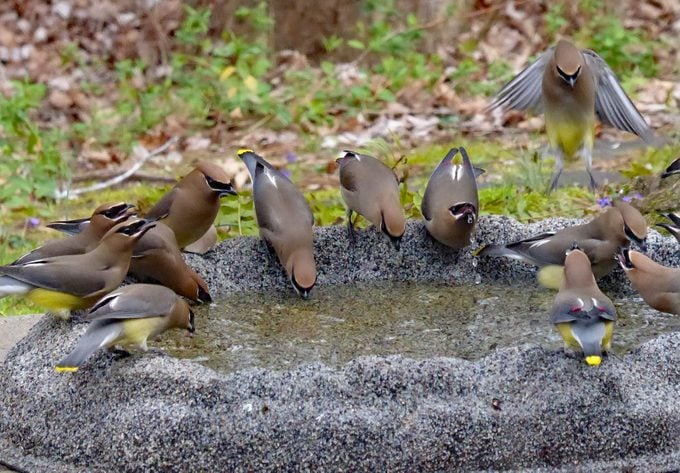
Both cedar and Bohemian waxwings are noted berry lovers. They travel in flocks, so sheltered perching locations and fruit-producing trees and shrubs attract these elegant visitors. After they gorge themselves on juniper, mountain ash, hawthorn or holly berries, entice them closer to the ground with a water feature.
Wrens
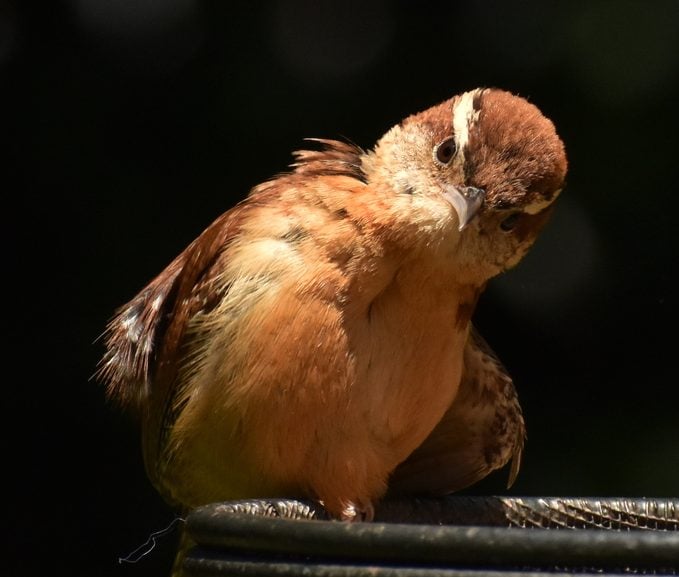
House, Pacific and winter wrens hop and crawl through thickets as they forage. Look for the perky behavior and striped eyebrow of Carolina wrens in the East and Bewick’s wrens in the West. The Tracys say that it’s best to place bird baths where you can see them to maximize your enjoyment of watching the birds, and also as a reminder to maintain your bird bath regularly.
Where to Place a Bird Bath
Pedestal bird baths allow you to watch birds splish-splashing around right from your window. Consider a ground-level bath, too. It mimics natural water sources and lures birds that like to stay low.
Nestle bird baths in a shady spot (to keep water fresh) that is near trees or shrubs, but not so near that predators can lurk in ambush. When a bird is taking a dip and a predator flies by, it needs a safe place to hide.
Psst—here’s how to turn a bird bath into a mini fairy garden.
Birds Prefer Shallow Water
Shallow basins are best. The water should be no deeper than 2 inches in the middle and ½ to 1 inch at the edges. Place rocks or stones in the middle of your bath for birds to perch and drink without getting their feet wet.
Will Hummingbirds Use a Bird Bath?
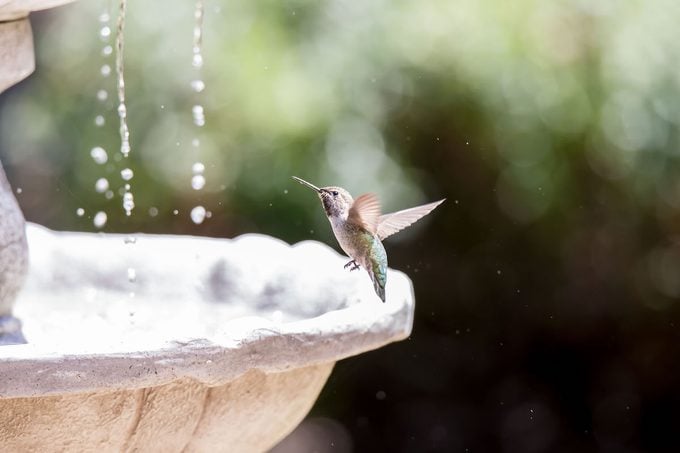
Hummingbirds love a light mist! To attract more hummingbirds, add motion with a dripper, fountain or mister. The noise and movement catches a bird’s attention better than standing water. Check out more information about hummingbird bird baths.
Here’s how to make a DIY hummingbird mister.
Clean Bird Baths Often
Clean and rinse your bath every couple of days and then add fresh water. Grab a wire brush for a deep clean if algae forms. You can also rinse and scrub the basin out with a solution of nine parts water to one part vinegar.
This is how to clean hummingbird feeders.
How to Make a DIY Bird Bath
Your feathered friends won’t mind if you recycle. Give a trash can lid, old frying pan or flowerpot drainage tray new life as a quick and easy DIY bird bath. Just add water!
Learn how to make a DIY concrete leaf bird bath.
Bird Bath Essential Tips
Four top tips from Wild Birds Unlimited store owners Laura and Mel Tracy.
- Change the water every few days and use a stiff brush to scrub off any debris.
- Disinfect occasionally with a mild bleach solution (1 part bleach to 10 parts water) and rinse well.
- Add the sound of moving water with a wiggler or dripper to attract migrating birds.
- Heat bird baths in the winter so visitors can clean and maintain their insulating feathers.
Next, learn how to repair a cracked bird bath.
